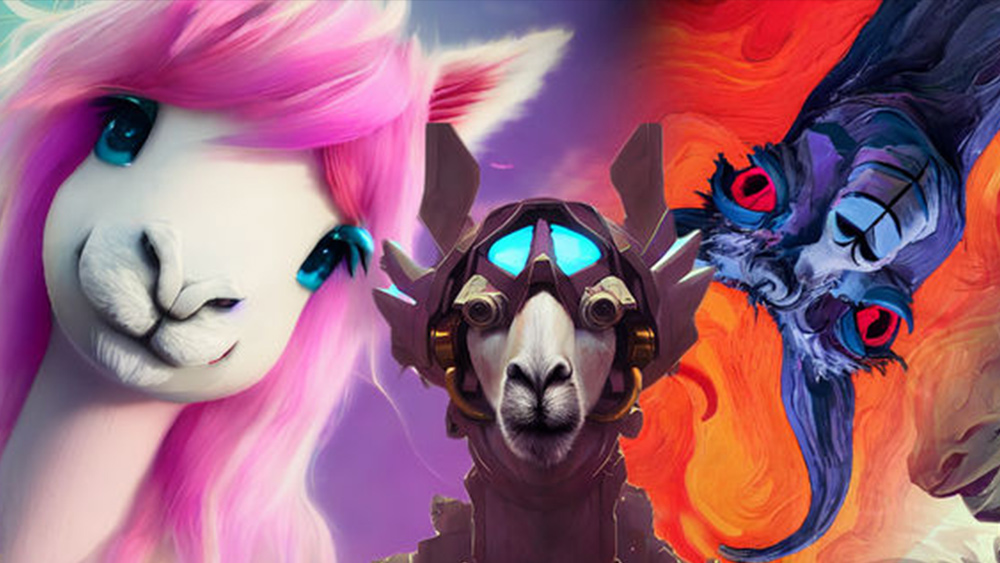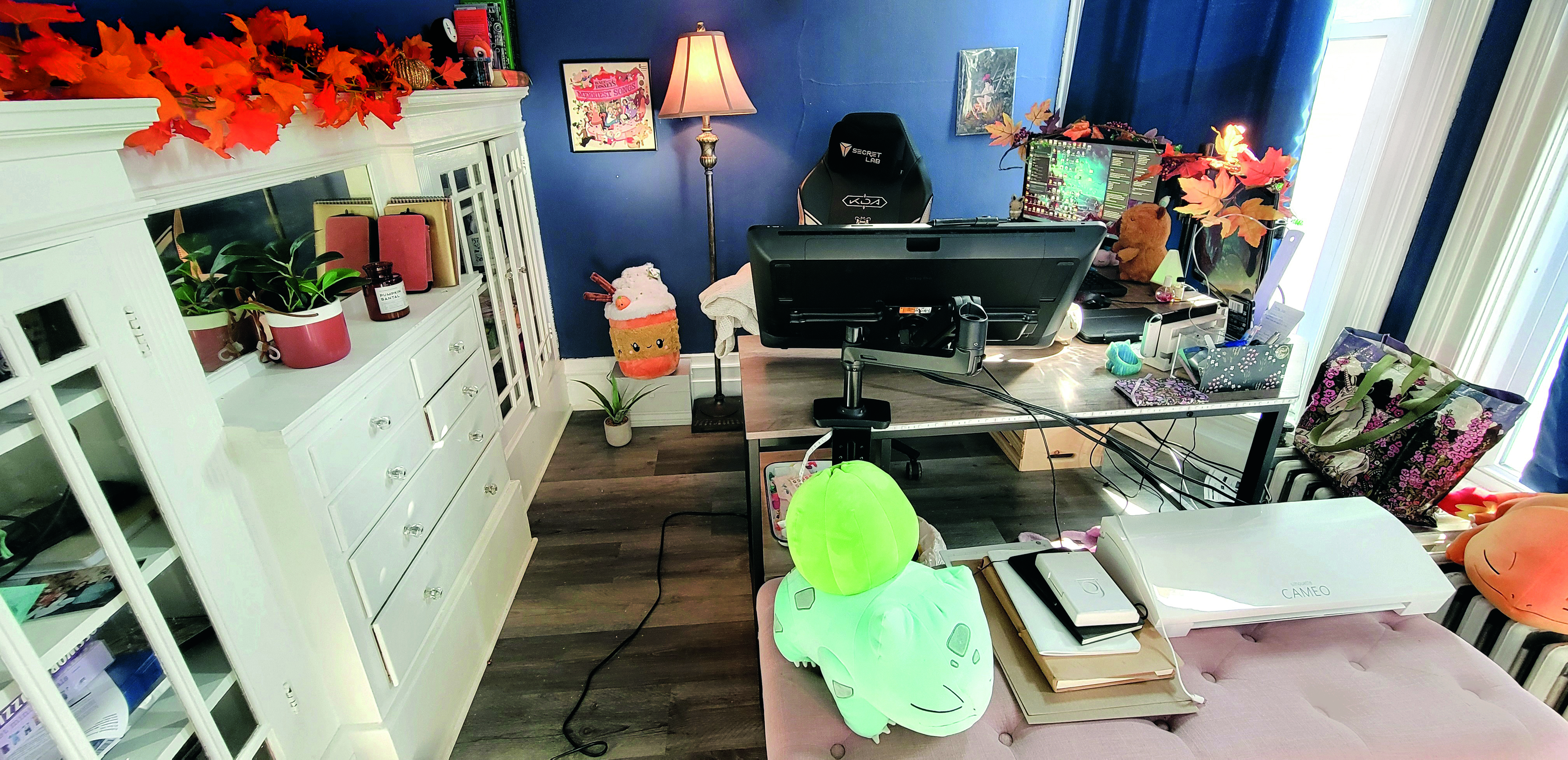
The art and design world is trying to work out just what place generative AI will have in the industry's future. The latest controversy along the way involves the major online art community, DeviantArt. It's launched its own AI feature, but the way it's been executed didn't go down well with many members.
One of the big controversies with text-to-image AI tools has been copyright. Generative AI is trained on millions of scraped images – usually scraped from the internet without the consent of the original artist (see how to use Dall-E 2 to learn more about the technology). So DeviantArt members weren't happy to learn that they would have to opt out to stop that happening with their work. The platform's quickly changed its policy due to the backlash, but not everyone's convinced.
This is an incredibly bad idea that seems almost hand-crafted to alienate and enrage the DeviantArt userbase. Even if muddying the artistic waters by embracing AI was a good idea (it's not), requiring an opt-out instead of an opt-in was a completely unforced error.November 11, 2022
DeviantArt, a social network of artists and art enthusiasts that claims to have 61 members, has launched its own AI art generator. It's called DreamUp, and according to the platform, it's going to make AI art "safe and fair" for creators. Access requires a DeviantArt's paid Core subscription plan, although all users can try it out with five free prompts.
A big concern for artists has been that AI image synths can be trained to replicate their style without them getting any credit and without them being able to do anything about it. DeviantArt stressed that it was giving artists control over their work by allowing them to choose whether or not its tool can use their style for direct inspiration and whether or not to allow their work to be used in datasets used to train third-party AI models.
If artists accept use of their style, they'll be "clearly credited" on any output when it's published on DeviantArt. The platform also recognised that not everyone considers AI art to be real art, so it said all DreamUp submissions would automatically be tagged as #AIArt so that users can choose whether they want to see or hide posts.
It said that for those that opt out, it would add a "noimageai" directive to the HTML files on the content pages, and a "noai" directive to media files downloaded from DeviantArt's servers. But there's the catch. Members would have to actively opt out. By default, there work would be considered fair game for DreamUp. And the opt out forms had a 10-day review period.
DeviantArt has decided your artwork there is fair game to be used in their new AI generator by default. You have to go to an obscure form to opt-out and requires 10 days to be reviewed. https://t.co/CZhnuXk39sNovember 11, 2022
The scale of the backlash caused DeviantArt to change its policy almost immediately. It's now saying that all work will be excluded by default, with artists needing to opt in rather than opt out. It also stressed that any third party AI models or training sets that had used work from Deviant Art had done so without permission.
Daily design news, reviews, how-tos and more, as picked by the editors.
It said: "In order to remain in compliance with DeviantArt's updated Terms of Service, third parties that continue to use DeviantArt-sourced content to train machine-learning models of any kind must ensure their training data set excludes all content for which either of these directives are present. DeviantArt encourages other creator platforms to adopt this approach in order to ensure artists remain able to share their work with online audiences while retaining control over non-human usage."
Update: We heard the community feedback, and now ALL deviations are automatically labeled as NOT authorized for use in AI datasets. https://t.co/QnTPc3TA8a pic.twitter.com/pnQVgIsFkANovember 12, 2022
But for some, it may be too late to undo the damage. Some members fear that their work may already have been used to train DreamUp without their permission (and DeviantArt's tool is based on the existing open-source AI tool Stable Diffusion, which was developed using images scraped from the web). Some say that the policy is still unclear, while others say the mechanism used to exclude the work of those who don't opt in is too weak.
Okay, but how will you inform the artists who have already have their work stolen by AI programs during the hours (or longer?) of being forcibly opted in. This is copyright infringement (like your very own policies say!) and we have a right to know. https://t.co/5O2mQH7vdENovember 12, 2022
there's zero reason to ask for the user's social media accounts on opting out on a feature. Opting out should be for everyone, nor based on a criteria you won't even clarify. It also should never become a paid featureNovember 12, 2022
Since these companies have decided to take no legal action to protect the rights of artists, the least they can do is maintain their own ToS. In practice? This is just a HTML meta tag ASKING webcrawlers not to steal for AI use. No enforcement. This is the bare minimum. pic.twitter.com/tKCobzllLINovember 12, 2022
@DeviantArt is saying their IA suck at art and need to train at replicating your art, by haversting your portofolios as data.Then @DeviantArt IA will be good enough to replace artists and their jobs@DaviantArt is doing the greatest theft in human history, decades of art stolen. https://t.co/cQrLBoCr0NNovember 12, 2022
Their target audience is AI clickers and NFT bros who will spend stupid amounts of money to mass produce images and tell themselves they're gonna be rich. Artists are not who they're advertising to anymore. They don't want us.November 11, 2022
going to plug this here again since these dudes deleted their org tweet. the reply to this also shows where you can try to find your own art: https://t.co/tStVug7l0fNovember 12, 2022
AI art will surely continue to cause controversy. We've already seen artists up in arms after AI art won a competition and we've seen copyrighted AI art that looks uncannily like Zendaya. But on the other hand, we've also seen fun experiments like when someone used AI for a hilarious upgrade to '90s video game characters and all kinds of weird AI art. With Meta, Microsoft and Google involved, it seems almost inevitable that text-to-image AI is going to play a big role in creating visual images, but it's still not clear how much.

Joe is a regular freelance journalist and editor at Creative Bloq. He writes news, features and buying guides and keeps track of the best equipment and software for creatives, from video editing programs to monitors and accessories. A veteran news writer and photographer, he now works as a project manager at the London and Buenos Aires-based design, production and branding agency Hermana Creatives. There he manages a team of designers, photographers and video editors who specialise in producing visual content and design assets for the hospitality sector. He also dances Argentine tango.
